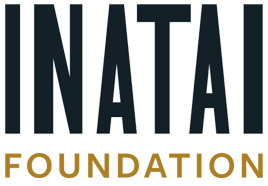Get To Know Inatai | Our Team | Identity
How we identify
At Inatai Foundation, we know individual identities strengthen collective efforts. That’s why we believe in building a board representative of the diverse communities we serve and with a wealth of lived experiences to inform our work.
With an eye toward transparency and to meet the same expectations we ask of grant and sponsorship applicants, we are sharing the demographic information of our board. In this way, we hope both to feature the multifaceted identities our board members bring to the table and shed light on opportunities to deepen future diversification efforts.
Board Members identify as the following races
Eight of our 14 current board members identify as people of color.
- American Indian – Chumash (one)
- Asian American (one)
- Black (two)
- Latin/Hispanic (one)
- Latinx (two)
- Native American (one)
- White (six)
-
Board members identify as the following ethnicities
- American (one)
- Indigenous California Indian (one)
- Irish (one who identifies with multiple ethnicities)
- Czech (one who identifies with multiple ethnicities)
- French (one who identifies with multiple ethnicities)
- Irish (two who identify with multiple ethnicities)
- English (two who identify with multiple ethnicities)
- Scottish (one who identifies with multiple ethnicities)
- Pennsylvania Dutch (one who identifies with multiple ethnicities)
- Korean (one)
- Nicaraguan (one)
- South American (one)
- Venezuelan (one)
Immigrant Experience
-
Three board members identify as immigrants, from Nicaragua, Bolivia, and Venezuela.
-
Five board members have immigrant family members or come from an immigrant family, from Nicaragua, South Korea, Netherlands, Greece, Venezuela, Mexico, and other Latin American countries.
Refugee Experience
No board members identify as refugees themselves. No board members have family members who identify as refugees.
Public Assistance
- Four board members have used public assistance before, including but not limited to Supplemental Nutrition Assistance Program (SNAP) and Medicaid.
- Nine board members were raised in families or households who used public assistance.
Court-Affected
- No board members identify as court-affected (formerly incarcerated, under parole, paying court debt, etc.).
Disability
- Two board members identify as being disabled or having a disability. Disabilities shared include muscular dystrophy.
Sexual Orientation
- Twelve board members identify as straight or heterosexual
- One identifies as lesbian
- One identifies as queer.
Gender Identity
Board members identify as women (three), men (one), female (one), transgender men (one), cisgender women (three), cisgender men (three), and cisgender (one).
Age
- Two board members are in their 40s
- Three board members are in their 50s
- Eight board members are in their 60s
- One board member is older than 70
Households
Board members describe their households as: two-parent, married with no children, married, single, domestic partner household, complicated, and multigenerational.
One board member is a renter. Thirteen board members are homeowners.
Grew up
Board members grew up in the following places:
- Pacific Northwest
- Rural Nebraska
- Washington DC
- Montana
- Missouri
- New York City
- Bolivia
- Los Angeles
- Venezuela
- Nicaragua
- San Francisco
- Guam
- Santa Barbara
- Swinomish
- Olympia
- Everett
- Seattle
Formal Education
- One board member completed an associate degree
- Two board members completed a bachelor’s degree
- Eight completed a master’s degree
- Three completed a doctorate degree
First Generation College
- Four board members were the first ones in their family to go to college
Formal Education of Parents
The level of formal education our board members’ parents received includes:
- Middle school (five)
- High school (three)
- Some college (one)
- Associate degree (one)
- Technical education (two)
- Bachelor’s degree (seven)
- Master’s degree (one) or other graduate degree (three)
Religion and Spirituality
- Christian (one)
- Spiritual with no specific affiliation (two)
- None (two)
- Nominal Christian (one)
- Zen Buddhism (one)
- Agnostic (one)
- Believe in a higher power and the spirit in ourselves (one)
- Catholic (one)
- Seventh-day Adventist (one)
- Raised Catholic, but not practicing (one)
